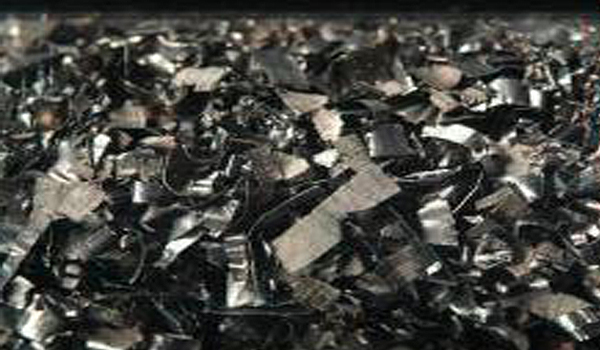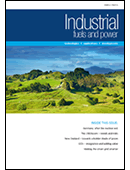Thawing a path to the future
Some thinktanks believe thorium could solve the world’s nuclear problems. Others are more sceptical. Giles Crosse investigates.
Right now, the battle of words is raging over how Accelerator Driven Subcritical Reactors (ADSRs) have the potential to replace carbon-free nuclear power stations with a more sustainable, cost-effective and safer form of nuclear power, to the benefit of the consumer and the environment.
Back in 2008, the UK’s Engineering and Physical Sciences Research Council (EPSRC) launched a study, “Thorium Fueled Accelerator Driven Subcritical Reactors for Power Generation.” The paper came as European, US, Japanese, Chinese and Indian eyes were beginning to turn to thorium as an option for the future.
Concluded in June 2010, the EPSRC research found that, “ADSR is a potentially safer alternative to conventional uranium- or plutonium-fuelled critical nuclear reactors. Significantly, an ADSR can be fuelled with non-enriched thorium, which is three times more abundant than uranium. The ADSR would then breed and burn its own fuel in a cycle that produces much less plutonium.
“Importantly from a safety perspective, because an ADSR is subcritical, the nuclear chain reaction must be fed from an external source of neutrons. This is provided by a beam of accelerated protons or heavy ions ‘chipping’ neutrons from a target within the reactor itself through a process known as ‘spallation’.
“The accelerator thus plays a role in controlling the ADSR analogous to that of control rods in a conventional reactor, but with the important difference that the reactor can be shut down very rapidly by switching off the accelerator.
“The amount of long-lived nuclear waste produced by ADSRs is less than for conventional reactors, and they have the further advantage of being able to transmute and render safe waste from conventional reactors using the excess neutrons created in the spallation process. ADSRs thus have the potential to provide a more sustainable, cost-effective and safer form of nuclear power in the future.”
Post-Fukushima, such advantages should be ever more telling, especially as much renewable technology still lacks the ability to generate reliably day-in day-out. Yet seemingly controversy still reigns over the true benefits of these techniques. The UK arm of Friends of the (FOE), blogs that, “It does look as though this technology may have some potential at some point in the future.
Then again, FOE UK also argues thorium nuclear reactors aren’t going to be ready in time to play a role in meeting the world’s energy needs. And timeliness is key, as rising global temperatures and CO2 emissions make finding solutions ever more pressing.
| EPSRC: “Thorium Fueled Accelerator Driven Subcritical Reactors for Power Generation” – key conclusions: 1. The reliability of the accelerator(s) driving the ADSR is crucial to the economics of the concept. We have developed and evaluated a number of approaches through which the economic risks associated with the deployment of this innovative technology can be mitigated through flexibility in its design and development pathway. 2. The claimed benefits of the thorium fuel cycle in terms of its long-term waste inventory depend importantly on whether the waste is reprocessed and the bred fissile material recycled. 3. We have assessed a range of ADSR concepts against the goals set for Generation IV nuclear reactors (Safety & Reliability, Proliferation Resistance, Economics and Sustainability). Unsurprisingly, different concepts represent trade-offs between these competing objectives. Given that the majority of prior work on ADSRs has assumed they will be fast systems (using no moderator to slow down fission neutrons), it is interesting how often thermal ADSR systems (using a moderator) feature in the preferred concepts arising in this assessment. |
Plenty of further debate exists, from within agencies including the Thorium Energy Amplifier Association (THOREA), which is blogging almost daily on the subject. Its Secretary, Dr Geoff Parks, is also University Senior Lecturer in Nuclear Engineering and Radiation Protection Supervisor at the Department of Engineering, University of Cambridge.
Parks is positive surrounding whether thorium really is a potential gamesaver in the energy/CO2 debate. “Potentially, it is, yes. Nuclear power in general is low carbon. The thorium fuel cycle offers some potential advantages over the established uranium/plutonium cycle, not the least of which is the fact that thorium is three to four times more abundant than uranium,” Nonetheless, there are tough issues surrounding thorium implementation and deployment.
“Probably the biggest one is the investment required to establish all the elements of the fuel cycle: mining, refining, fabrication and, potentially, recycling, at a commercial scale. None of these are, of themselves, particularly difficult but substantial resources would be required to establish all of the industrial infrastructure, and to make such an investment one would want certainty that there was a large enough market to justify the investment.
“This in turn creates a bit of a chicken-and-egg situation because without the supporting fuel cycle infrastructure it’s impossible to commit to deploying nuclear reactors fuelled with thorium, so there is no market.”
Realistically, issues surrounding infrastructure and competitive markets plague all new tech. The now burgeoning recycling sector, shot down by sceptics in its infancy, can point to how eventually scale up and markets will develop if economic and environmental needs are there. Regardless of the opinions of NGOs or environmentalists fundamentally opposed to nuclear from the outset, it does seem strange that there is pensive interest in the EU and China if the technology doesn’t have potential?
“The thorium fuel cycle definitely has potential, but if you believe that the established uranium/plutonium cycle will suffice until nuclear fusion finally reaches commercial viability then there is little incentive to look at using thorium.
“Thus, the attractiveness of thorium depends on how optimistic/pessimistic you are about the prospects for fusion, and on what timescale, and on how soon you think uranium will last, which in turn depends on how much nuclear new build you think there will be globally and whether you are willing to countenance the use of fast breeder reactors, to breed fissile plutonium from fertile uranium-238.”
The waste debate
Another element that may stack up well in the pro-thorium debate is its potential advantages from both a safety and a waste aspect. These are likely to become ever more meaningful as long-term sustainability and safety reach higher and higher into public and governmental thinking. Does the thorium, “Less waste more power” equation actually add up?
“Pretty well,” says Parks. “Because the thorium fuel cycle works by breeding fissile uranium-233 from fertile thorium-232, the length of time you can keep using the fuel in a reactor is limited by the effects of radiation damage to the fuel cladding.
“This is different from the case in existing uranium-fuelled water-cooled reactors where the amount of fissile material in the fuel decreases over time, so eventually you ‘run out of juice’ and have to put some fresh fuel in. This difference means you can keep thorium fuel in a reactor for longer and thus generate more energy from the same mass of fuel – getting more bang for your buck.
“That having been said, the nuclear waste arising from a thorium-fuelled reactor is more radio-toxic than the waste from uranium-fuelled reactor if you are operating an ‘open cycle,’ in which the spent fuel is simply disposed of. If you operate a ‘closed cycle,’ in which the spent fuel is recycled, potentially useful for power generation, then components of it are recovered and the remaining waste is disposed of, then the situation reverses and the waste from the thorium cycle is less radio-toxic than that from the uranium cycle.”
Safety issues
Parks also suggests that the truth surrounding safety concerns compared with other nuclear options is revealed in the minutiae.
“This depends on the type of reactor in which the thorium fuel is being used. An accelerator-driven subcritical reactor, ADSR, the sort of reactor THOREA is interested in, is intrinsically safer than existing designs in the respect that a Chernobyl-type criticality accident is impossible, but a Three Mile Island loss of cooling accident is possible in an ADSR and a Fukushima-type accident might be possible depending on the exact design of the reactor.
“It is possible to use thorium in combination with uranium or plutonium from recycled spent reactor fuel or decommissioned nuclear weapons in existing reactor designs. If one wanted to follow this exploitation path then the only barrier is the lack of the fuel cycle infrastructure. If one really ‘went for it’ this could be possibly be established in a decade.
“If instead one was looking at exploiting thorium in a novel reactor, such as the ADSR, then the timescales will at least double. The thorium fuel cycle is more proliferation resistant than the established uranium/plutonium cycle, but it is not proliferation-proof as some of its more enthusiastic proponents claim. Unless another government makes a bold decision to try to capture a commercial lead in the exploitation of thorium by investing significantly in the necessary R&D then I would agree that India will lead on developments in this area.”
It might certainly be a pleasant future dream to imagine decommissioned arms powering a less dangerous world towards a sustainable future, but as Parks points out the drivers and complexities which must be met before this ever happens are plentiful. The chances are many eyes will be glancing towards India to see whether thorium can play a role in that country’s bountiful economic growth.
| “Capturing thorium-fuelled ADSR energy technology for Britain”, another report prepared by THOREA in 2009-2010, suggested that: Recent developments in advanced accelerator technology have provided the UK with a unique opportunity to create, build and sustain a multibillion-pound industry based upon alternative, safe, inexhaustible, low-waste and proliferation-resistant nuclear power generation. This innovative nuclear industry and its associated technology will: • Allow the UK to compete aggressively in existing nuclear markets • Open up entirely new international nuclear markets that at present are closed to all current and planned uranium and plutonium-based nuclear technologies • Directly impact other high-technology industries, including medicine • Enable the UK, and other nations, to meet carbon reduction targets without increasing nuclear waste streams • Immediate investment will enable the UK to benefit from the momentum of its existing accelerator programme to secure a clear world lead in the new nuclear technology. It is entirely realistic to expect that • The key ADSR technologies will be developed and functioning demonstrators delivered within five years. A privately funded 600MW prototype power station capable of providing electricity to the grid will be constructed and commissioned by 2025. |
If it can, many others may be tempted to come onboard too.
The report argues that the return on such an investment was likely to be a viable and robust UK thorium-fuelled ADSR nuclear industry serving a global need for low carbon, sustainable but safer nuclear electricity, with a projected revenue of at least GBP10-20bn per annum beyond 2025.
No Responses
Leave a Reply
Make sure you enter the * required information where indicated.
You must be logged in to post a comment.


 Click here to read the Q4 2011 Issue of Industrial Fuels & Power
Click here to read the Q4 2011 Issue of Industrial Fuels & Power 

